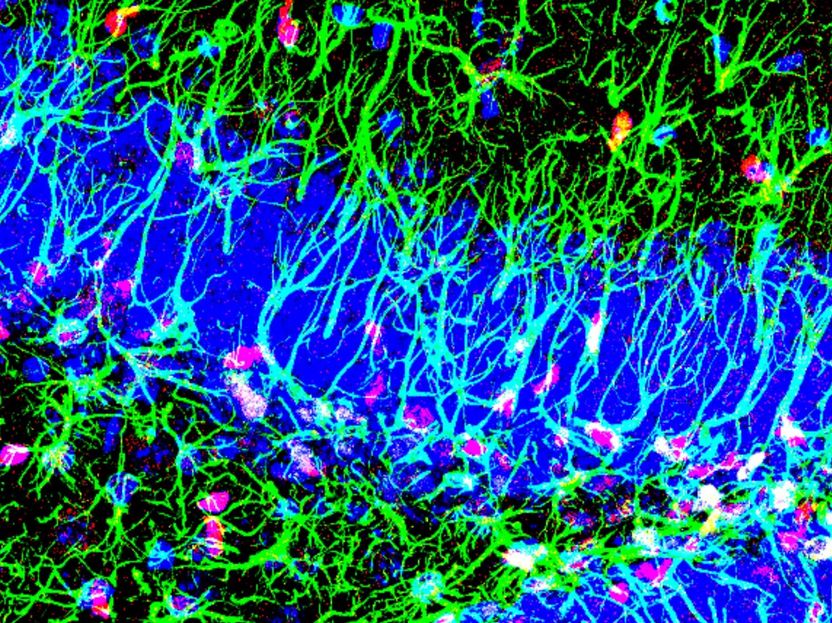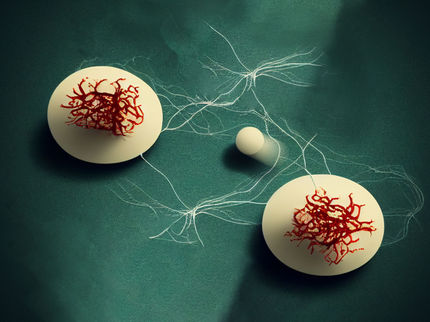New mechanism discovered to activate stem cells in the adult brain
CSIC researchers lead an international study that has described key proteins in the generation of new neurons in the brain
Advertisement
An international study led by CSIC researchers has discovered a new mechanism that controls the activation of stem cells in the brain and promotes neurogenesis (generation of new neurons) throughout life. The work, which has been on the cover of Cell Reports, demonstrates the importance of understanding the genetic keys that promote adult neurogenesis and opens the door to the design of strategies to activate neural stem cells in situations of neuronal loss, such as in neurodegenerative diseases.

Microscopic specimen of the hippocampus with presence of stem cells and Sox6 protein.
Cristina Medina-Menéndez
The birth of new neurons does not end in infancy. In some regions of the brain, new neurons continue to form throughout life. The key lies in neural stem cells, which have the potential to generate new neurons. However, these cells normally remain dormant. This is why the work led by Aixa V. Morales, a researcher at the Cajal Institute of the CSIC, is of great relevance. It has described proteins, present in stem cells, that are essential for the activation of adult neurogenesis.
The group has discovered that the proteins Sox5 and Sox6 are mainly found in neural stem cells of the hippocampus, responsible for memory and learning. "We have used genetic strategies that allow us to selectively eliminate these proteins from adult mouse brain stem cells and have shown that they are essential for the activation of these cells and for the generation of new hippocampal neurons," explains Aixa V. Morales.
In this work, the team, in which the groups of Helena Mira, from the Instituto de Biomedicina de Valencia (IBV-CSIC) and Carlos Vicario, from the Instituto Cajal, have also participated, has also observed that mutations prevent mice with environmental enrichment (wider and novel spaces) from generating new neurons. "In favorable environments, there is greater activation of stem cells and, therefore, a greater number of neurons are generated. However, the elimination of Sox5 from the brains of these mice is an obstacle to neurogenesis," says Morales.
In addition, other studies have shown that Sox5 and Sox6 mutations in humans cause rare neurodevelopmental diseases, such as Lamb-Shaffer and Tolchin-Le Caignec syndromes. These cause cognitive deficits and autism spectrum disorders. "This work will allow a better understanding of the important neuronal alterations that manifest in these diseases," Morales concludes.
Note: This article has been translated using a computer system without human intervention. LUMITOS offers these automatic translations to present a wider range of current news. Since this article has been translated with automatic translation, it is possible that it contains errors in vocabulary, syntax or grammar. The original article in Spanish can be found here.
Original publication
Li, L., Medina, C., García-Corzo, L., Quiroga, A.C., Calleja, E., Córdoba, C., Zinchuk, V., Muñoz, S., Rodríguez-Martín, P., Ciorraga, M., Colmena, I., Fernández, S., Vicario-Abejón, C., Nicolis S., Lefebvre, V., Mira, H. and Morales, A.V; "SoxD genes are required for adult neural stem cell activation."; Cell Reports.
























































